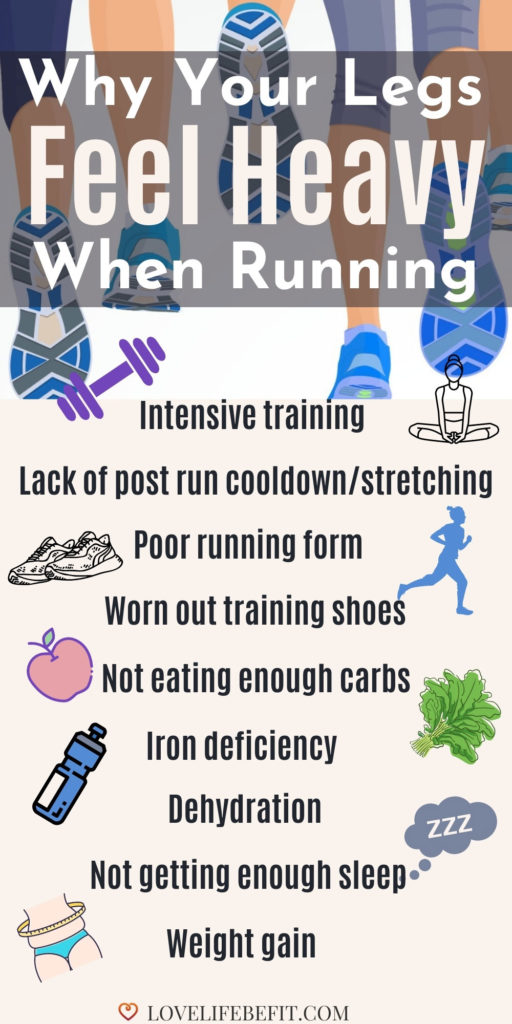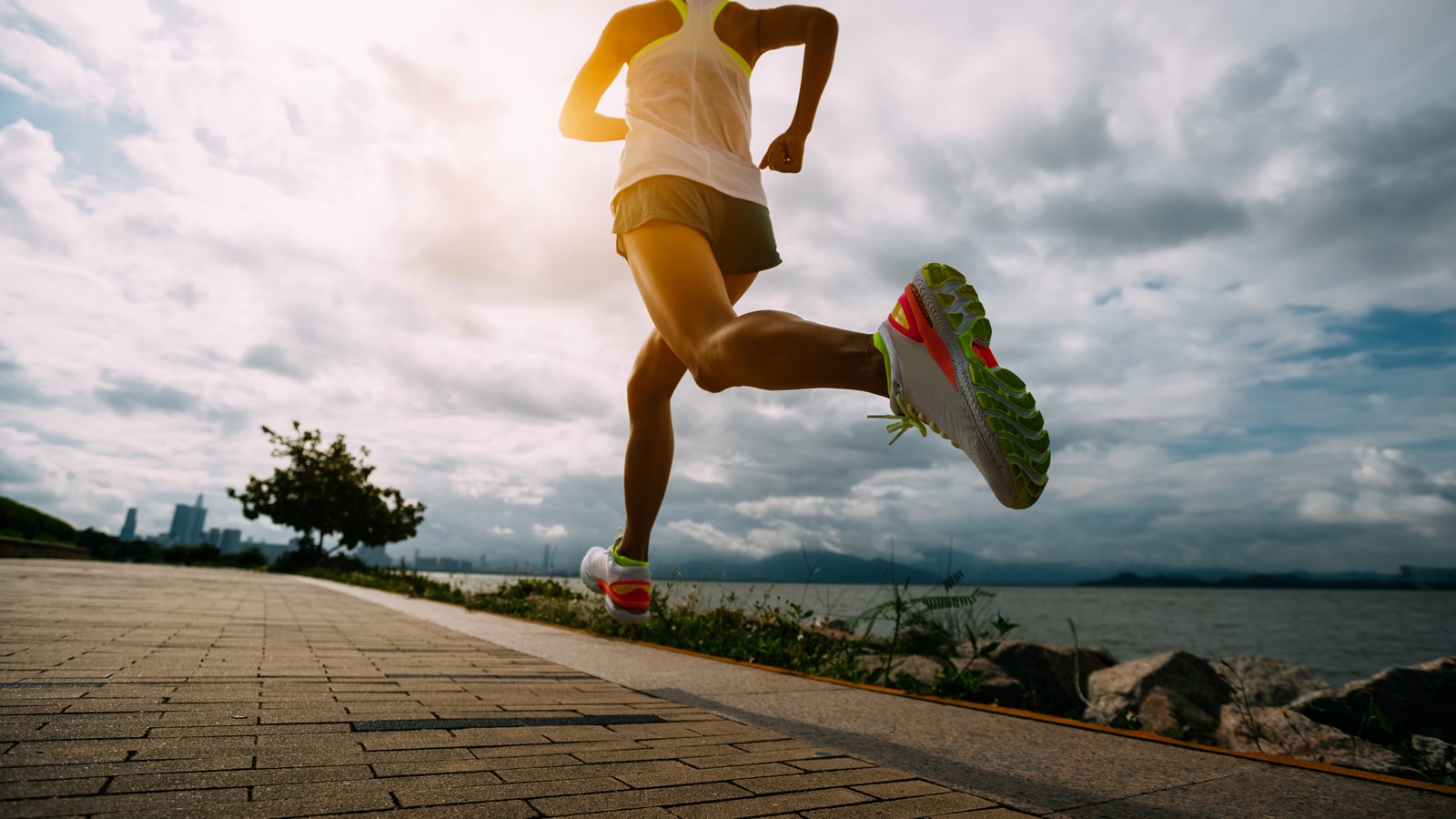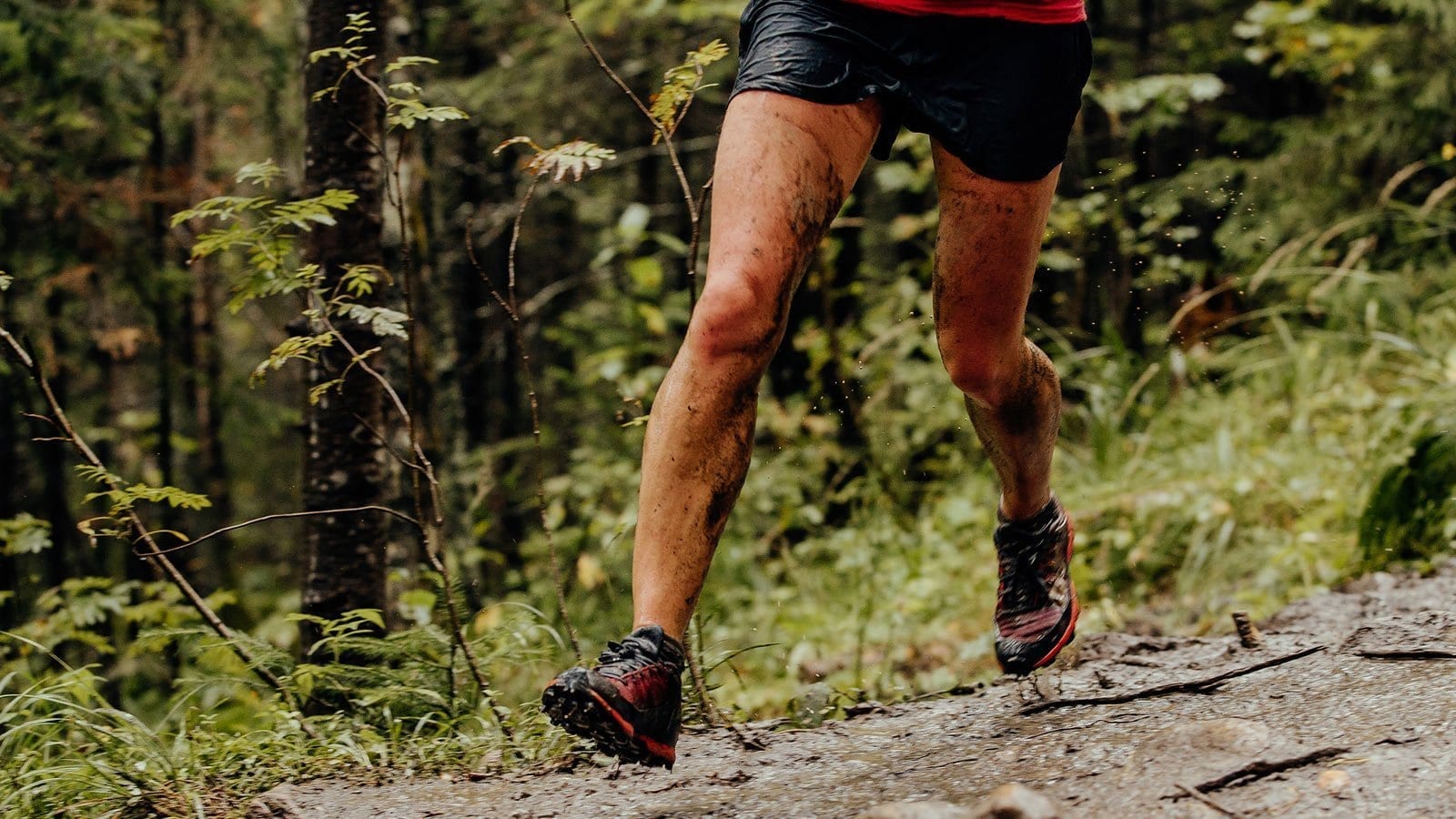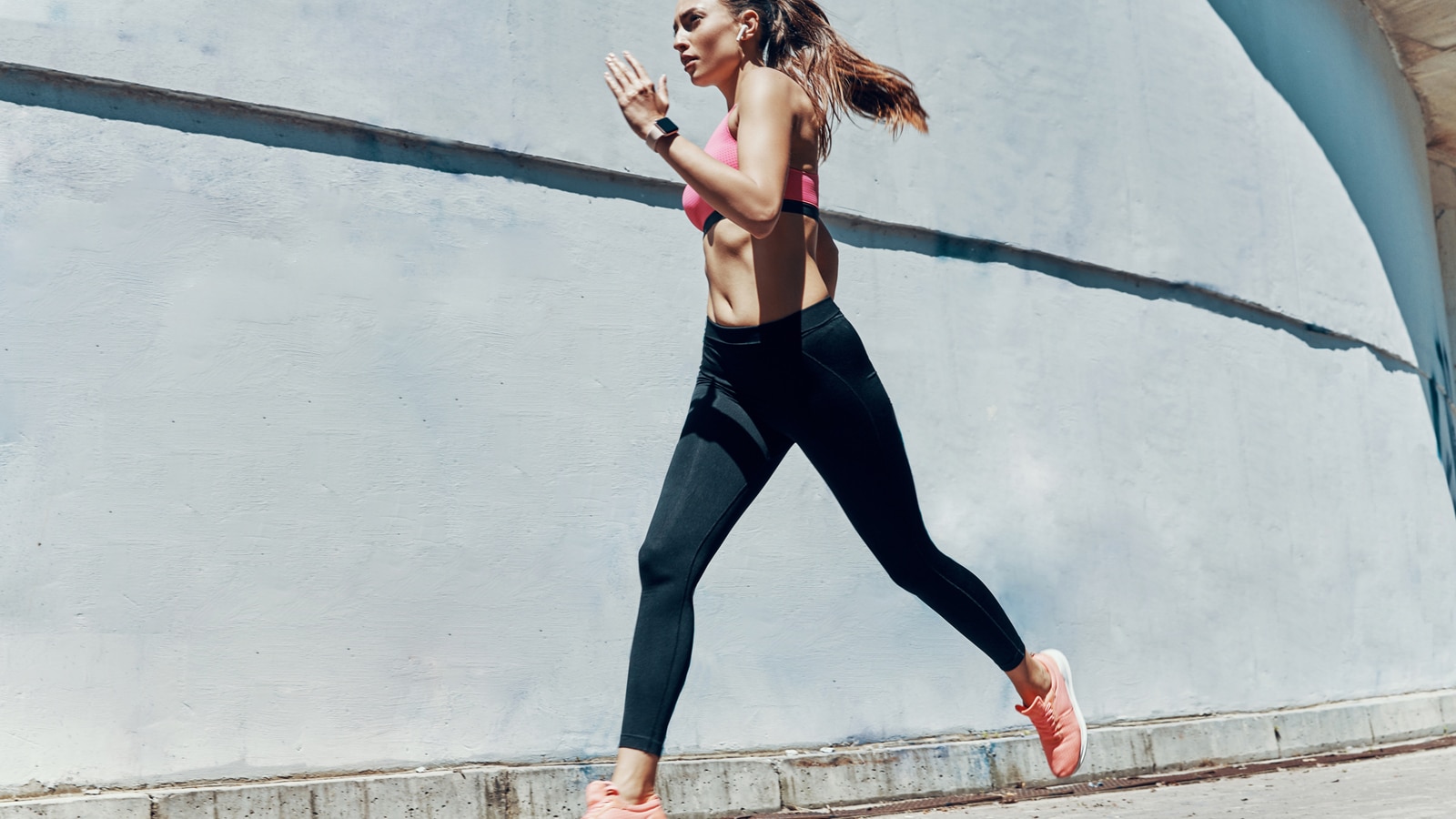Heavy Legs When Running? 12 Easy Fixes For Tired Legs!
You’re a runner. So I’m sure you know the feeling of heavy legs when running. Those days when you bounce out of the house full of enthusiasm, chuffed that you’re sticking to your training plan, only to find you’re dragging your legs along by the time you get to the end of the street.
Your mind is willing but your legs feel like they’re made out of cement. These “dead legs” are holding you back.
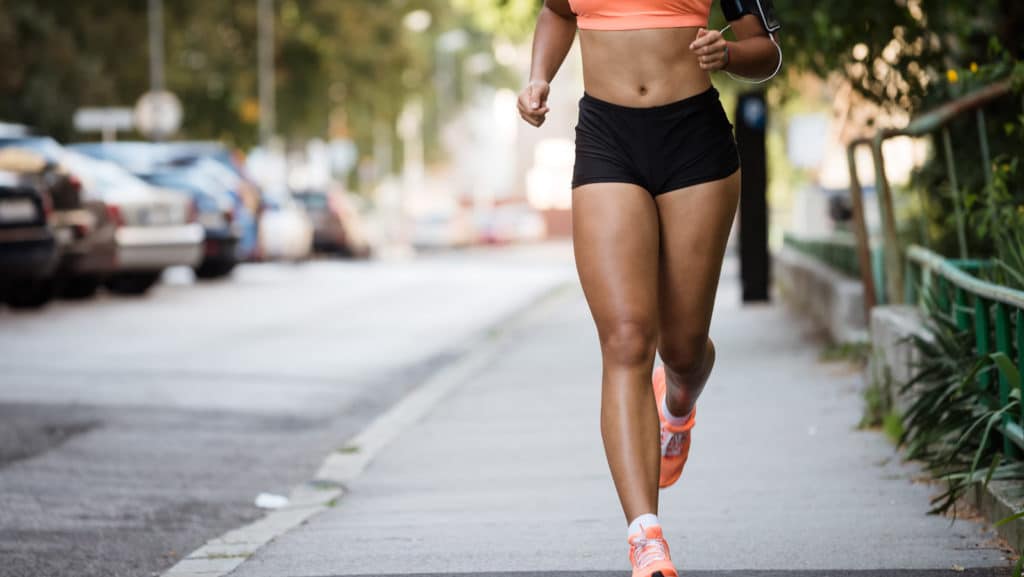
Why Are My Legs Heavy When Running?
Tired legs are incredibly frustrating when you’re starting out as a beginner runner or clocking up the miles training for a big event. Heavy leg days can just be the price of the training process. You’re building up your leg muscles and getting stronger but your legs are constantly recovering from the training load. The heavy leg feeling strikes on your hardest training weeks but normally disappears after a rest day.
It’s persistent heavy legs that become a problem. When you never seem to recover from one day to the next and your legs always feel heavy and tired when you’re out for a run.
This is when you need to dig into the causes of heavy legs when running. Find the cause and there are usually some easy fixes.
What Causes Heavy Legs When Running?
Not all causes of heavy legs are obvious. Sometimes it’s not just your actual training, it’s what you do before or after a run. Even diet, fuelling, and lifestyle choices make an impact on how your legs feel when running. These are the main causes:
Causes Of Tired (Heavy) Running Legs
- Overtraining
- Insufficient recovery
- Poor running form
- Skipping warm-up and/or cool down
- Dehydration
- Lack of sleep
- Iron deficiency
- Weak leg muscles
- Worn out training shoes
- Insufficient fuelling during runs
- The wrong diet
- Weight gain
- Poor circulation
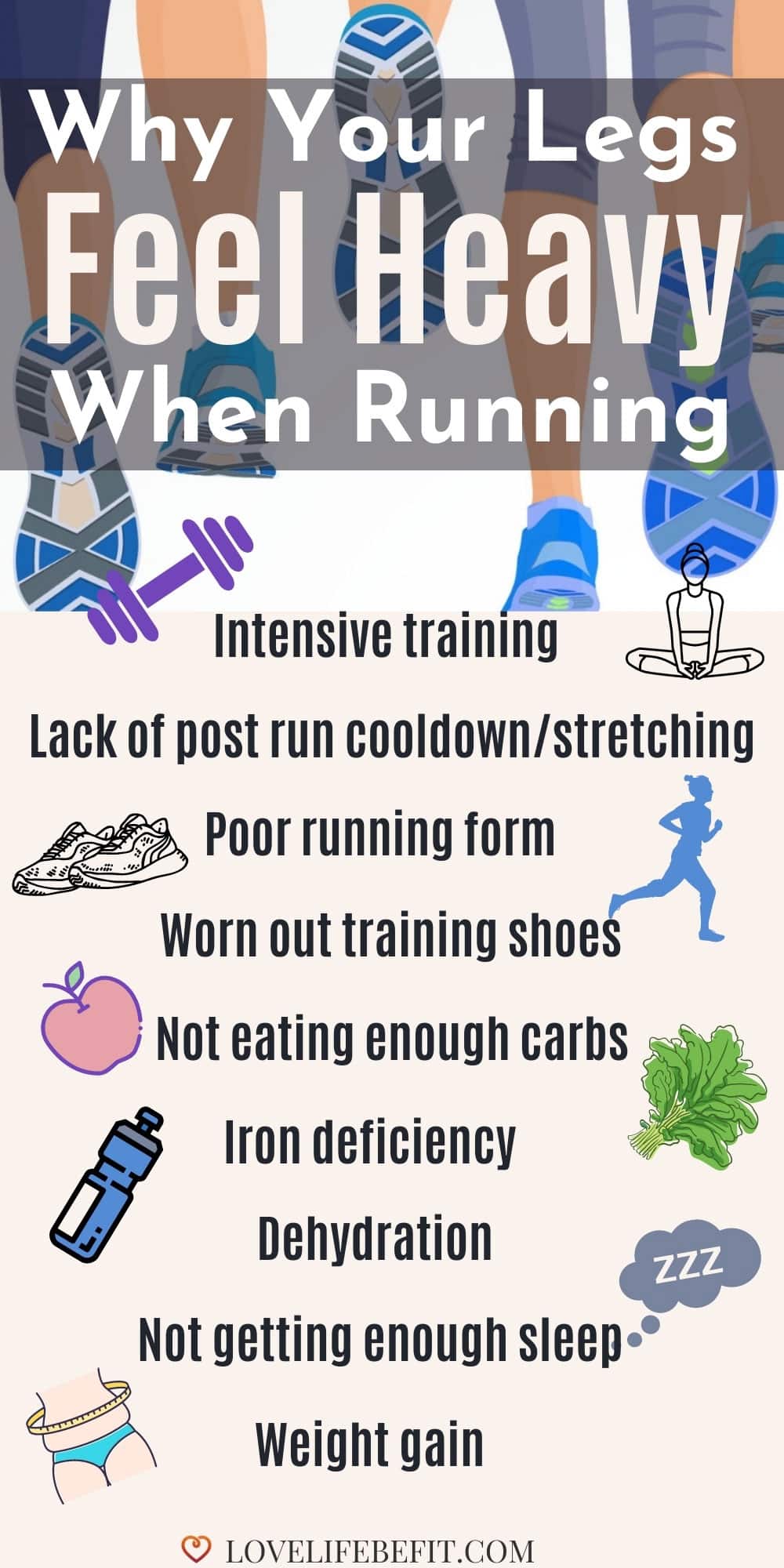
Overtraining
Top of the list and the most obvious cause is over-training. Generic training plans are guides only. You have to adapt them to suit your needs. If a plan is leaving you with consistently dead legs and you’re failing to recover, you need to schedule some extra rest days or repeat a week before moving onto a harder stage.
Insufficient recovery
Some runners will consistently skip cooldowns, avoid easy runs, and rarely schedule rest days. When you’re training hard, recovery is so important. There’s a huge difference between running 5 miles a day at an easy pace and building up to a long-distance run, such as a marathon, where you’re aiming for a personal best.
Too many hard sessions
Intervals, tempo runs, and hill runs all take their toll and recovery is essential. Often it’s intensity rather than distance that takes the most out of your legs. Beginner runners often suffer when they try to run hard sessions before they’ve built up sufficient leg strength.

The wrong diet
Running on empty, not eating enough carbs, or the right foods to recover quickly after your runs, can all cause that heavy leg feeling. It’s important to get your diet right when you’re a runner. Gain a few pounds on holiday and you’ll also feel it in your legs.
Dehydration
Hot weather and dehydration can make you suffer as a runner. It’s not just during your runs you need to be drinking. Make sure you’re drinking enough during the day and replacing lost body fluids. Follow these tips for running in the heat.
Check-in with your doctor
If you’ve ruled out the more obvious causes for heavy legs when running it could be time to turn to your doctor to check iron levels and circulation.
12 Ways To Prevent Heavy Legs When Running
Now you know the reasons why your legs feel heavy when running, it’s easy enough to go through the list and work out the potential causes. At this stage, you’re still speculating, but there are easy fixes to test out your assumptions and find the cure for those dead legs.
#1 Prioritize recovery
It’s important to be as serious about your recovery as you are about training. Those rest days may not be adding to your monthly mileage totals but they’re equally important!
Constantly bombarding your body with hard training days without taking any rest is a one-way ticket to heavy legs and possible injury. It’s better to learn to embrace recovery.
Look forward to your rest days. Plan fun events such as slow, (short), walks with friends, easy cycle rides, or going for a dip. Active rest is often best but if you need to just potter around the house for the day or put your feet up – don’t feel guilty – you’ve earned it!

Cool-down
Adding a cool-down period after each run helps the gradual recovery of pre-exercise heart rate and blood pressure. It may not reduce muscle stiffness but it’s good for your heart and blood vessels. Finish a hard run by transitioning to an easy pace for the last 5 – 10 minutes and for slow runs, ease into a walk.
Static stretching
Post-run static stretching can improve flexibility and range of motion around a joint. It’s unclear how much it helps prevent muscle soreness. Better flexibility can certainly aid running performance – just make sure you’ve cooled down sufficiently before you start stretching. It’s a big mistake to start stretching at the finish line of a race!
I’ve known runners who never stretch post-run and never seem to suffer from heavy legs. Most of us aren’t so lucky and can’t get away with skipping our post-run routine! I can certainly tell when I’ve gone a few days without stretching.
Static stretches are where you hold the stretch for 30 to 60 seconds, targeting all the main muscle groups you use when running. Stretch out your glutes, hamstrings, quadriceps, hips, back, and arms. It can also help to aside time during the week for stretching. I find a regular yoga for runners session really helps!
#2 Avoid overtraining
Let’s face it – runners are a super optimistic bunch of people! It’s great! But we can get a bit carried away especially when it comes to long-distance and ultra running.
Behind some of those amazing long-distance achievements, there are always paybacks. As a twenty-something runner, I spent a lot of time injured.
Try and be sensible. Those heavy legs when running can be a warning sign. Sometimes, at the peak of your training schedule, it may be okay to keep running on tired legs. But persistent heavy legs are a red flag. Listen to your body and scale back the training. Sometimes less is more.
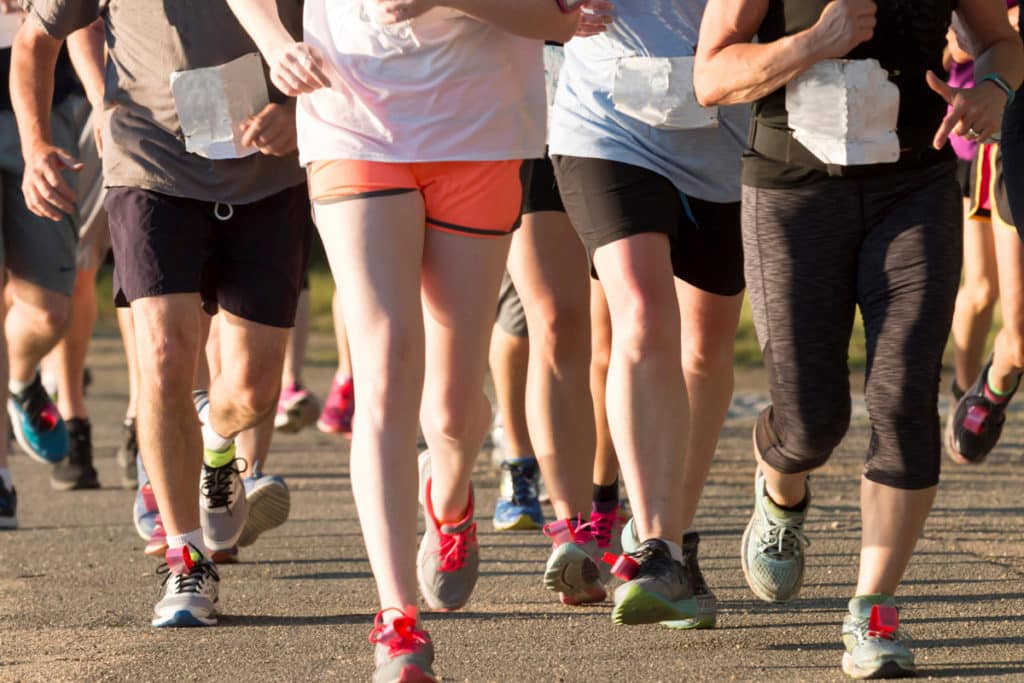
#3 Improve running form
I’ve added this one to the list with a little skepticism. It’s not easy to change your running form. Go about it the wrong way and you can make matters worse.
It’s easier to change your running form if you’re a beginner runner when your style of running is less hard-wired. A few little tips can help such as increasing your running cadence, (the number of steps you take per minute), looking ahead as you run, and using your arms with a natural arm swing.
Increasing your cadence is a good way to prevent over-striding where your weight slams down into your heel. Quicker leg turnover naturally leads to slightly shorter steps, encouraging your feet to land underneath your body.
Read more about improving your running form in this article:
Most runners will find it’s better to work on strength, speed, and a good range of movement in your hip flexors. Improvements in these areas will naturally lead to a better running form and have more impact on avoiding heavy legs when running.
#4 Warm up properly
We’ve all done this. Set off for a run or race too fast and felt terrible part way round. Those muscles need to be warmed up before you make them work hard, especially if your job involves sitting at a desk all day!
The best way is to make time for some dynamic stretching before you start running. Dynamic stretches warm up your muscles and improve your range of motion. Think of it as prepping your body ready to run.
To avoid heavy legs when running, follow up dynamic stretching with 5 – 10 minutes of walking or easy running before you start your training session. Remember pacing yourself is the best way to run longer without getting tired.

#5 Drink enough water
Studies have shown athletes are often unaware of mild levels of dehydration. You could be setting off for your run already dehydrated and of course, running will make it even worse. Dehydration will affect your performance including making your legs feel heavy when running.
Dehydration is an obvious issue exercising in hot weather, but most people are up to 2% dehydrated without even realizing it. You wake up dehydrated every day, so if you’re a morning runner you’re likely to be suffering before you even start your run.
It’s not just fluids runners need to think about. Exercise depletes water and electrolytes. If you’re training hard or in hot weather, it can be a good idea to use hydration mixes during recovery and before as well as during your runs.
Try and tune into your body’s signals and drink when you’re thirsty. It’s easy to get distracted during the day and forget to drink enough. If remembering to drink is a problem, make sure you always have a bottle of water to hand and set reminders on your phone.
The best indicator of low-level dehydration is your pee color. It should be a clear, or very light straw color. Other signs are headaches and dry or stiff skin, (dehydrated skin loses its elasticity). Serious signs are a racing heart and feeling light-headed or dizzy.
#6 Get enough sleep
Lack of sleep will not only affect your actual performance but will make running feel harder. That’s the result of this recent study into sleep deprivation. If you want to feel better when you run, make sure you have a regular sleep routine.
Adults need 7 – 8 hours of sleep every night and for teenagers, it can be as much as ten. Staying up late at weekends can wreck your sleep patterns when you need to get up early for work on a Monday morning.
Getting enough sleep is often overlooked but can be a contributor to the feeling of heavy legs when running. Let’s face it, none of us feel at our best when tired and it’s bound to eventually affect performance.
#7 Change your shoes
Did you know your running shoes should be changed every 500 miles? It’s even less according to some major brands. That feeling of heavy legs when running could just be caused by the midsole foam wearing out on your favorite running shoes.
One way to check if your shoes need replacing is to have more than one pair on the go – a newish pair and an older pair. When you can feel the difference between the shoes and it feels like your feet and legs are taking a pounding, it’s time for a new pair.
Watch out for uneven wear on the soles on the soles of your running shoes. It can be a sign that you need different shoes with better support for your feet.
#8 Fuel properly
If you get a hollow leg feeling part way around your run, the cause is insufficient fuel. You’re running on empty!
There’s a tendency to push the limits of how far you can run without eating. “I ran 8 miles without eating last week – should manage 10 this time round”.
That’s all very well but how far you can run without topping up your energy supplies will vary from run to run. It can depend on what you had for breakfast, the size of your meal the night before, or how hard you’ve been training over the last few days.
✅ It’s recommended to start topping up your carbohydrate levels after the first hour of running. Aim for 1g carbohydrates per 1 kg of bodyweight. For the average-sized runner that’s about 3 gels every hour.
A wise runner will be prepared and take a gel or energy bar just in case. Hitting empty – that heavy-legged running feeling – can leave you feeling drained. Fuelling properly not only leads to a better running experience but speeds up your recovery.
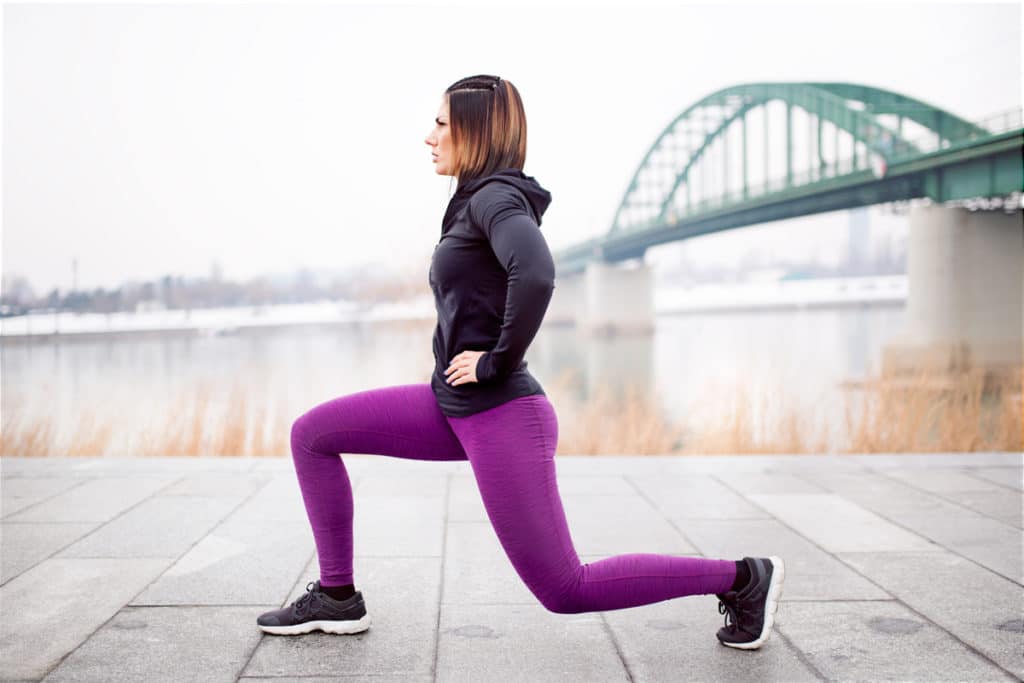
#9 Add strength training but don’t overdo it.
Heavy legs when running could be from a lack of strength training or from overdoing it. Strength imbalances, lack of leg strength, and a weak core will all work against you as a runner.
Hill sessions and interval training
It’s important to work some form of strength training into your training schedule. This could be by gradually building your mileage, running hill workouts, and interval training – all traditional methods used by runners over the decades to build leg strength and maintain a strong core.
Just remember if you’re a beginner runner you need to take care. Hill sessions and intervals are a fast track to injury for new runners. It’s better to spend the first 6-12 months as a runner slowly building up your mileage before adding in these harder sessions.
Weight training for runners
Using weights is an increasingly popular way of strength training for runners. It can be really beneficial but the hard part is often fitting weight training into a full running schedule. It’s not going to work lifting weights on your rest days. It’s a shortcut to heavy legs when running trying to run the day after a weight training session that targets your lower body.
By all means, choose weights to build strength, but make sure you plan for your recovery. Think about it first. Are weights relevant for your current stage of running? It may work for elite athletes but that doesn’t mean it’s the right session for most runners.
Yoga for runners’ sessions or bodyweight exercises for runners can be a much better way to build strength without hitting the gym. It’s a good way to deal with muscle imbalances plus you’re improving flexibility. I find I recover much faster from yoga sessions and can fit them in easily around my runs. Find out more in this post:
#10 Watch your diet
Diet can be a huge part of any runner’s performance and it’s a possible cause of heavy legs when running. The most obvious issue is weight gain.
It’s possible to gain weight without really noticing it so hit the scales and check. A few extra pounds may not be noticeable in the mirror but your legs will feel it – especially when you’re running uphill. Running can help with weight loss but it’s easy to overeat. Find out more:
Another cause of dead legs can be the type of diet you’re following. Following the low-carb Keto diet can be tough when you’re a runner. From a very limited study, it seems that some runners thrive and others see a significant negative effect on performance.
If you have heavy legs when running and you’re eating a Keto diet, think about switching to a low fat, high carb diet instead. You may find it’s a better way of fuelling your running.
#11 Check your iron levels
Iron deficiency is surprisingly common in runners. It’s as high as 17 percent of male and 50 percent of female runners. Runners lose iron through footstrike – red blood cells are damaged when your feet strike the ground reducing hemoglobin levels, through sweat, through the intestines, and for female runners, iron is lost during menstruation.
It’s hard to tell if your iron levels are low. Symptoms are fatigue and being slightly out of breath – just how all long-distance runners feel after a hard training session!
Rather than just treat yourself with iron supplements, it’s better to get checked out by your doctor. Most bodies will adjust to iron overload by absorbing less iron from the food they eat. In a few cases, high iron levels can cause long-term health damage.
Sources of iron are red meat, dark poultry (thighs and legs), beans, nuts, dried fruit, whole grains, and dark green leafy vegetables such as my favorite kale. Some breakfast cereals are also fortified with iron. Eating iron-rich foods along with foods high in vitamin C will help with absorption. Just go easy on the milky tea – both tannin and calcium in dairy decrease absorption.
#12 When you’ve tried everything else.
It’s possible your heavy legs when running are symptomatic of more serious underlying health issues. If you’ve gone through everything on this list and haven’t found a solution, it’s time to get medical advice.
Poor circulation is a possible cause but at this stage, it’s better to ask a medical expert instead of seeking advice online. Make an appointment with your doctor.
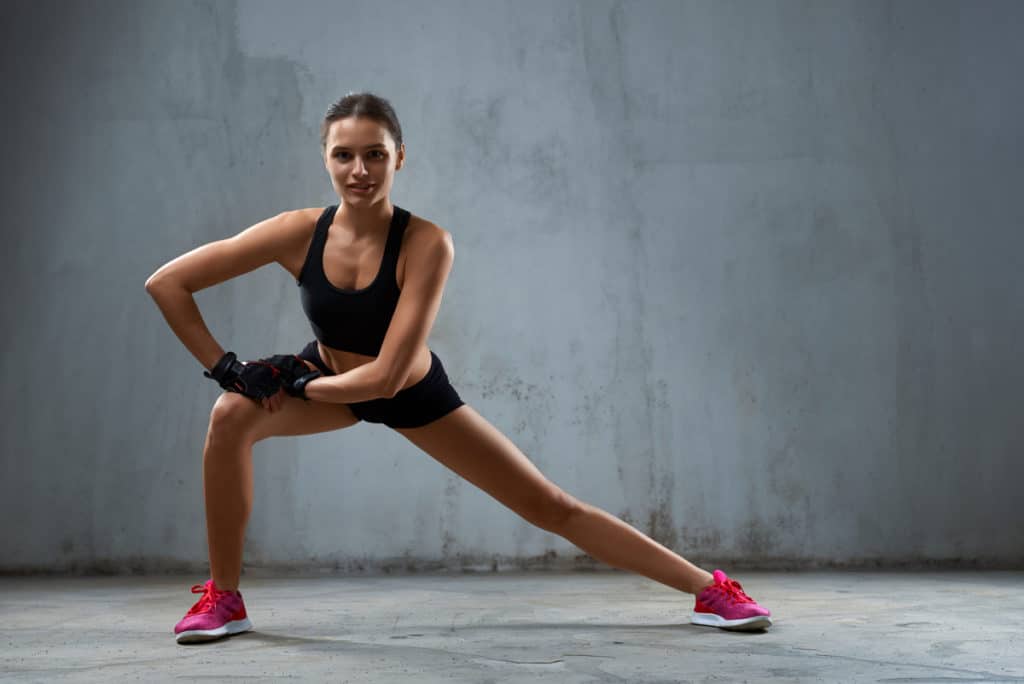
Don’t Let Heavy Legs Stop You From Training
When you have a bad run or two, it’s easy to feel down about your training. Instead of thinking negative thoughts, focus on the easy fixes. Just a few tweaks to your training schedule are often all it takes to get back on track enjoying your running.
Follow these 12 fixes for heavy legs when running and you’ll soon be back at the top of your game as a stronger, better runner!
Frequently Asked Questions
Why do your legs feel heavy when you run?
Overtraining is the most obvious reason. It’s easy to get carried away, increase your mileage too quickly and not take enough rest days. Another big culprit for heavy legs is too much intensity, such as interval training or strength training in the gym. Other causes of heavy legs are poor running form, skipping your warm-up or cool-down, dehydration, lack of sleep, worn-out training shoes, insufficient fuelling on long runs, not enough carbs, weight gain, or medical issues such as iron deficiency or poor circulation.
How do I stop my legs from getting heavy when I run?
These 12 tips will help you prevent heavy legs when you run: prioritize recovery, avoid over-training, improve running form, warm up properly, drink enough water, get enough sleep, change your shoes, fuel properly, add strength training but don’t over-do it, watch your diet, check your iron levels, and when you’ve tried everything else, go and see your doctor.
How do I prevent leg fatigue when running?
Leg fatigue can just be a sign that you’re training hard. It can be a necessary part of building distance and intensity as a runner. If you just feel tired towards the end and after your run that’s normal. When you don’t recover after one or two rest days, it’s time to check your training schedule and decide if you’re overdoing the quantity and intensity of your running.

